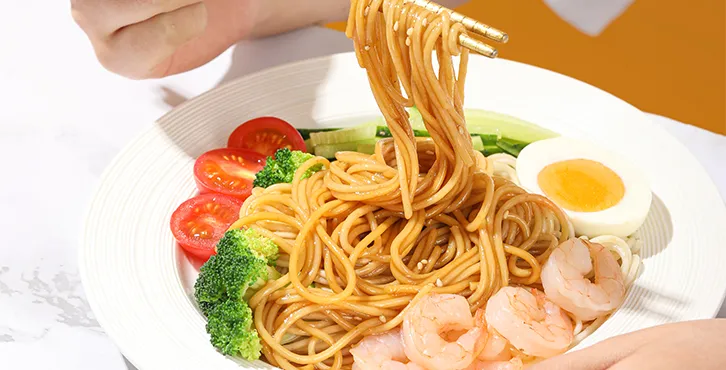Delicious and Easy Recipe for Homemade Chinese Noodles to Try Today
Homemade Chinese Noodles A Culinary Adventure
Homemade Chinese noodles are more than just a dish; they represent a rich tapestry of culture, tradition, and creativity. Whether you're a novice in the kitchen or an experienced cook, making your own noodles can be a rewarding experience that connects you to the deep culinary traditions of China. This article will explore the process of making homemade Chinese noodles, the types of noodles you can create, and some delicious ways to enjoy them.
Understanding Chinese Noodles
Chinese noodles come in a variety of shapes, sizes, and textures, with each type suited to different dishes. The main categories of Chinese noodles include wheat noodles, rice noodles, and egg noodles. Wheat noodles are generally chewier and denser, while rice noodles tend to have a softer texture. Egg noodles, as the name suggests, incorporate eggs into the dough, giving them a rich flavor and golden hue.
The Basics of Making Noodles
Making homemade Chinese noodles may seem daunting, but the process can be broken down into simple steps. Here’s a basic recipe to get you started
Ingredients - 3 cups of all-purpose flour - 1 teaspoon of salt - 1 large egg (optional, for egg noodles) - Water (as needed, approximately 1/2 cup)
Instructions
1. Combine Ingredients In a large mixing bowl, combine the flour and salt. If you’re making egg noodles, add the egg at this stage.
2. Mix and Knead Gradually add water, mixing with your hands or a fork until a rough dough forms. Transfer the dough to a floured surface and knead it for about 10 minutes until it's smooth and elastic. The goal is to develop the gluten, which gives the noodles their chewy texture.
3. Rest the Dough Cover the kneaded dough with a damp cloth or plastic wrap and let it rest for at least 30 minutes. This allows the gluten to relax, making it easier to roll out.
homemade chinese noodles

4. Roll Out the Dough After resting, divide the dough into smaller sections. Using a rolling pin, roll each section into a thin sheet. Depending on personal preference, the thickness of the sheets can vary. Aim for about 1/16 inch or 2 mm.
5. Cut the Noodles Once rolled out, dust the surface with a bit of flour to prevent sticking. Cut the sheets into desired noodle shapes—this could be wide for flat noodles, or thin for spaghetti-like strands.
6. Cooking the Noodles Boil a large pot of water and add the freshly cut noodles. Cook them for about 3-5 minutes, depending on their thickness. The noodles should be tender yet chewy. Drain and rinse under cold water to stop the cooking process.
Noodle Variations and Recipes
Now that you’ve mastered the basic noodles, the variations are endless. Here are a few ideas for different types of noodles and some delicious recipes to try
1. Wonton Noodles By rolling the dough thinly and cutting it into squares, you can create wonton noodles. These are often served in hot broth with vegetables and meat.
2. Chow Mein After boiling, toss the noodles in a hot wok with oil, vegetables, and your choice of protein for a delectable stir-fried dish.
3. Noodle Soup Make a simple broth using chicken or pork bones, add some vegetables, and let it simmer. Cook your homemade noodles separately and serve them in the broth for a comforting noodle soup.
4. Cold Noodle Salad For a refreshing dish, mix cooked noodles with cucumber, carrots, and a tangy sesame dressing. This is perfect for warm weather.
Conclusion
Homemade Chinese noodles offer a unique way to connect with a beloved culinary tradition while enjoying the satisfaction of creating something from scratch. Whether you choose to enjoy them in a steaming bowl of soup or as a base for a vibrant stir-fry, your homemade noodles will undoubtedly impress family and friends alike. So roll up your sleeves, gather your ingredients, and embark on this delicious adventure in your kitchen!
-
Unleash Your Inner Chef with Delectable Italian Pasta CreationsNewsAug.01,2025
-
Savor Health and Flavor: Irresistible Soba Noodles for Sale Await!NewsAug.01,2025
-
Nourish Your Body with Premium Organic Ramen - A Culinary Delight AwaitsNewsAug.01,2025
-
Elevate Your Dishes with Our Exquisite Kinds of Egg NoodlesNewsAug.01,2025
-
Dive into Flavorful Convenience with Our Ramen OfferingsNewsAug.01,2025
-
Discover Exquisite Types of Naengmyeon and Chilled Soba NoodlesNewsAug.01,2025
-
Is Whole Wheat Pasta Healthy?NewsMay.30,2025
Browse qua the following product new the we

















































































































